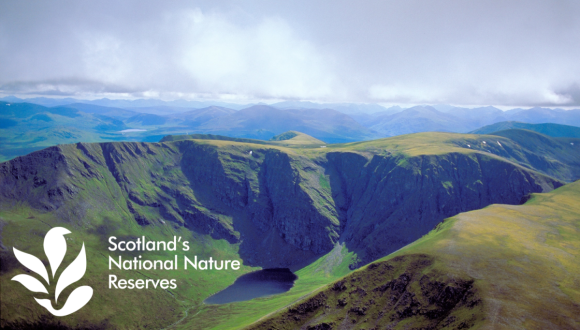
Record numbers flock to NatureScot's national nature reserves in 2020
21 December 2020
Over a million visitors are estimated to have visited NatureScot’s National Nature Reserves (NNRs) in 2020, an increase from an estimated 650,000 in recent years.
The increase, initially due to lockdown, was followed by continued interest and enthusiasm across the nation for spending time in nature in this difficult year.
Winter is a wonderful time to continue that habit. There’s plenty to see on nature reserves, from swans, geese, waders, finches and other songbirds to grey seals and deer.
NatureScot Chief Executive Francesca Osowska said: "People throughout Scotland have been enjoying spending time outdoors more than ever in 2020. Nature is helping us all cope with anxiety throughout this difficult time and strengthening our resilience. I’d encourage people to get out and enjoy their local national nature reserves over the holiday season, following the latest government guidelines. Our nature reserve staff have highlighted some spectacular sights to see on our reserves this winter.”
In Tayside, there’s a special treat at Burleigh Sands at the Loch Leven nature reserve, with a unique take on the 12 days of Christmas. Follow the signs to find the 12 Birds of Christmas, which end at a bird hide where visitors can hopefully then spot all the birds from the trail and be able to identify them.
In North East Scotland at Forvie reserve, the Ythan Estuary is buzzing with birdlife: the swans, as well as pink-footed geese from Iceland and a myriad of waders and ducks from Arctic regions gather here. Lucky visitors might cross paths with an otter at dawn or dusk – try Waulkmill hide or Waterside Bridge. The number of grey seals will gradually increase over the winter; be sure to view them from across the river at Newburgh beach to avoid disturbance.
In South Scotland, birdwatching in winter at Caerlaverock reserve is spectacular. Visitors can watch the geese in their characteristic V-shaped skeins during morning and evening. The sight and sound of thousands of geese in the air at sunrise or sunset is unforgettable. Barnacle geese can also be seen settled on the saltmarsh most days. There are also oystercatchers, curlew, redshanks, shelduck, pintails, and knot on the reserve now. This year, the reserve has seen a good number of little egrets, with their distinctive black legs and yellow feet, with over 40 recorded at the latest count.
In the Highlands, a walk around the lower trails at Creag Meagaidh reserve will reveal large flocks of finches, such as chaffinches, brambling, linnet and goldfinches, feeding on wildlife-friendly crops. There are also a wide range of woodland birds. In the morning, look for black grouse which have a strong population on the reserve. The higher path is likely to have snow at this time of year, but offers amazing views, with possible sightings of red deer, raven and golden eagle.
Francesca has some final words of advice for those visiting nature reserves: “It’s been amazing to see so many people enjoying our reserves this year, but we’d also like to remind people to protect our reserves for future generations. For example please don’t litter or light campfires, as these can damage plants, trees and wildlife.”




